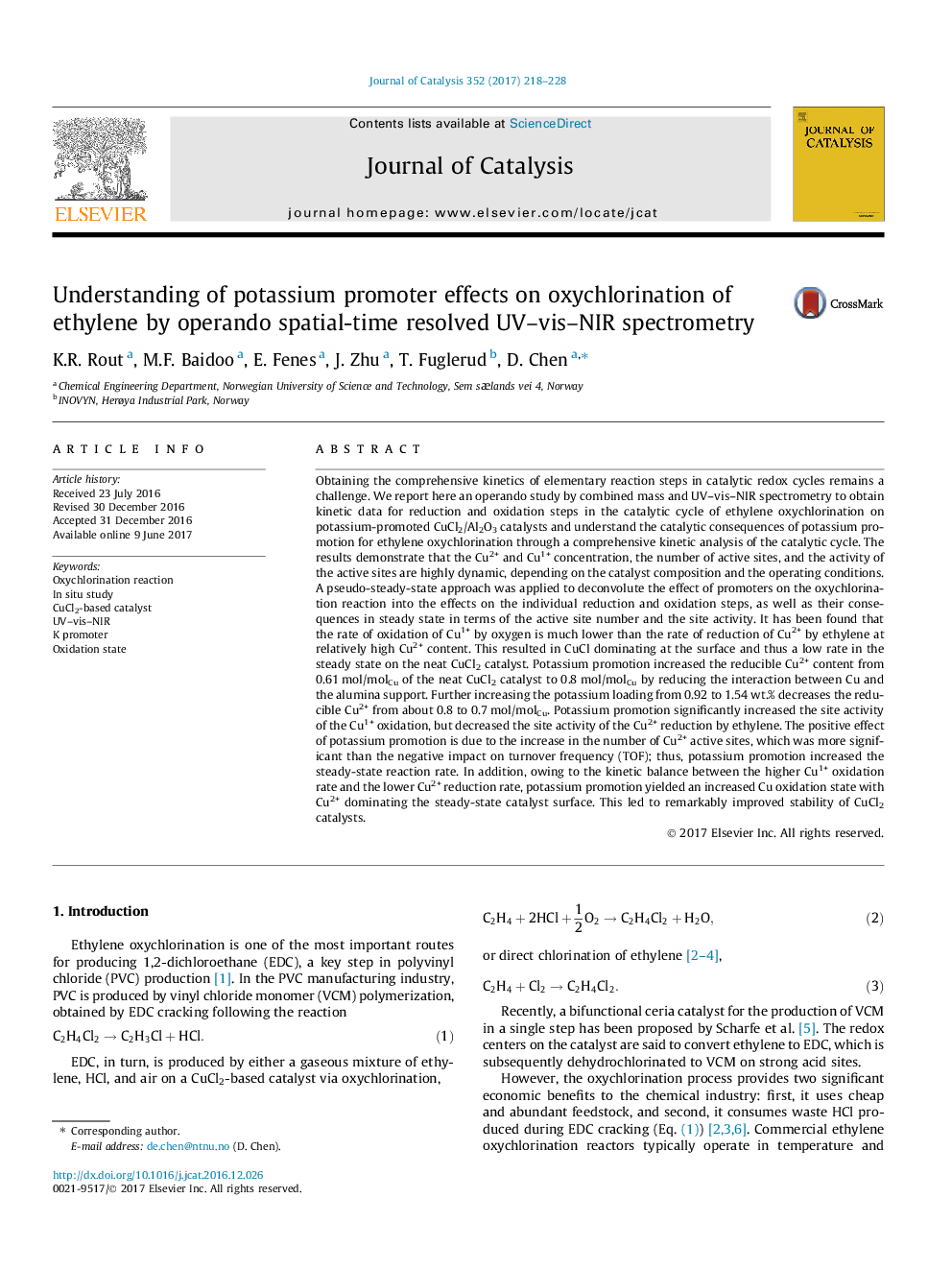| کد مقاله | کد نشریه | سال انتشار | مقاله انگلیسی | نسخه تمام متن |
|---|---|---|---|---|
| 6455374 | 1419757 | 2017 | 11 صفحه PDF | دانلود رایگان |

- Operando study to obtain kinetic data on ethylene oxychlorination.
- The dynamic nature of Cu2+/Cu1+ and the site activity of the catalyst are illustrated.
- A pseudo-steady-state approach was applied to deconvolute the effect of promoters.
Obtaining the comprehensive kinetics of elementary reaction steps in catalytic redox cycles remains a challenge. We report here an operando study by combined mass and UV-vis-NIR spectrometry to obtain kinetic data for reduction and oxidation steps in the catalytic cycle of ethylene oxychlorination on potassium-promoted CuCl2/Al2O3 catalysts and understand the catalytic consequences of potassium promotion for ethylene oxychlorination through a comprehensive kinetic analysis of the catalytic cycle. The results demonstrate that the Cu2+ and Cu1+ concentration, the number of active sites, and the activity of the active sites are highly dynamic, depending on the catalyst composition and the operating conditions. A pseudo-steady-state approach was applied to deconvolute the effect of promoters on the oxychlorination reaction into the effects on the individual reduction and oxidation steps, as well as their consequences in steady state in terms of the active site number and the site activity. It has been found that the rate of oxidation of Cu1+ by oxygen is much lower than the rate of reduction of Cu2+ by ethylene at relatively high Cu2+ content. This resulted in CuCl dominating at the surface and thus a low rate in the steady state on the neat CuCl2 catalyst. Potassium promotion increased the reducible Cu2+ content from 0.61Â mol/molCu of the neat CuCl2 catalyst to 0.8Â mol/molCu by reducing the interaction between Cu and the alumina support. Further increasing the potassium loading from 0.92 to 1.54Â wt.% decreases the reducible Cu2+ from about 0.8 to 0.7Â mol/molCu. Potassium promotion significantly increased the site activity of the Cu1+ oxidation, but decreased the site activity of the Cu2+ reduction by ethylene. The positive effect of potassium promotion is due to the increase in the number of Cu2+ active sites, which was more significant than the negative impact on turnover frequency (TOF); thus, potassium promotion increased the steady-state reaction rate. In addition, owing to the kinetic balance between the higher Cu1+ oxidation rate and the lower Cu2+ reduction rate, potassium promotion yielded an increased Cu oxidation state with Cu2+ dominating the steady-state catalyst surface. This led to remarkably improved stability of CuCl2 catalysts.
60
Journal: Journal of Catalysis - Volume 352, August 2017, Pages 218-228